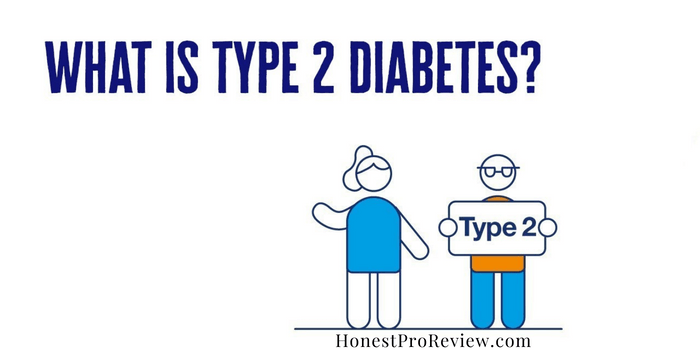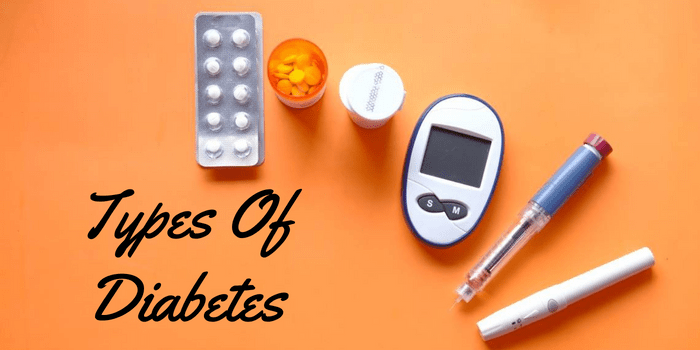What is Type 2 Diabetes? – Symptoms Causes and FAQs

June 26, 2025 by Robert Dowling
What is Type 2 Diabetes? : Type 2 diabetes is the most prevalent disease that has been found in adults. It results from high blood sugar levels and a lower amount of insulin production in our body.
That makes it difficult for the body to absorb the nutritional factors and the weaker body is prone to many bacterial and viral attacks. Too much sugar level is dissolved in the bloodstream, which leads to nervous system and immune response disorders.
Let’s get to know more about this disease in detail, and also, we will see the symptoms of diabetes.
What is Diabetes?

Diabetes is a chronic disease that affects the body when the blood glucose level is very high in the blood. Blood sugar is important for energy production, but its use is regulated by the insulin produced by the pancreas.
The production of insulin matters a lot as it determines the quantity of glucose to transfer to the other cells of the body, but when there is less or no production of insulin, our blood sugar level doesn’t reach the cells and stays in the blood, dissolving excess sugar levels.
Over blood sugar levels increase the risk factors inside our bodies, and there is no treatment for this problem.
There are mostly two types of diabetes that are found by the doctors, which are mentioned below:
What is type 1 Diabetes?
Type 1 diabetes occurs when there is less or no production of effective insulin in the pancreas. Our immune system starts working adversely and, instead of protecting against external agents, it starts attacking the pancreatic cells that produce insulin.
Type 1 diabetes can occur at any stage and even children and adults can be the target of this disease. The few symptoms that can be seen in them are:
- Hunger levels are increased. Mental and physical fatigue Excessive weight loss Urination problems
What is Type 2 Diabetes?
In people, Type 2 diabetes is the most common disease that happens in people. In this case, neither the body produces insulin nor does it utilize insulin. It is much more dangerous when too much glucose gets dissolved in our blood and we are unable to process it.
But the good news is, type 2 diabetes can be prevented and we can make it less common. It is often found in much older or middle-aged people that are over 45 years old.
It also depends on the family’s genetic history, such as whether your forefathers, grandfather, or father have the disease, with excessive weight, obesity, and high blood pressure being common symptoms.
Some common symptoms of type 2 diabetes include:
What causes type 2 diabetes?
Some people claim that type 2 diabetes is caused at later ages and their symptoms are so slow that you won’t be able to identify them. Some people also claim that there are no symptoms, and some people may have gestational diabetes that takes the form of type 2 diabetes.
So here are the common causes that one can see as the factors of type 2 diabetes:
Genes
It doesn’t have a clear pattern that follows the inheritance history, like in many cases, if any of your family members have suffered from the disease, it can be said that you are also going to have that problem in your life.
The risk factors are increased and the lifestyles that are worst in your case can make you deal with blurred vision and fatigue. The DNA can’t keep and build up the level of insulin needed to fight off the effects of diabetes.
Obesity
Excess weight or obesity increases the resistance to insulin production. Since body mass index directly depends on the fatty acids, and these fatty acids are unesterified, the level of diabetes is increasing due to impaired that are unable to control the level of obesity.
Excessive weight causes diabetes mellitus that changes the quantity and index of fat metabolism and carbohydrates, and due to a defect in insulin secretion, the diabetes mellitus goes on increasing.
Metabolic syndrome
Metabolic syndrome is a grouping of several health risk factors such as heart disease, type 2 diabetes, high blood sugar levels, high blood pressure, and many others.
The syndrome has caused abnormal cholesterol levels and a large waist is seen as a symptom. The common symptoms of type 2 diabetes like excess urination, obesity, and an increase in thirst are seen.
The normal cause of metabolic syndrome is the damaged digestive tract and the imbalance in immune response that cannot be controlled by type 2 diabetes.
Excessive glucose production
Hyperglycemia or high blood glucose is the term that specifies the involvement of too much blood sugar level in our bloodstream, a people may often feel rapid heartbeat, excessive hunger and thirst level in a person.
This condition also resists the production of insulin and gives rise to type 2 diabetes. The blood sugar level is above the estimated level of 125 mg/l. There are many more things that can be seen in the condition.
Worst chemical Cell signaling
Diabetes caused by metabolic disorders affects the morbidity and mortality rate of people, and there are lots of vascular complications that are seen that are responsible for heart stroke and cardiovascular disease.
Diabetes causes a lot of chemical signals to be stopped and turned on at the same time. This includes the activation of the protein kinase C and hexosamine pathway, reactive oxygen species, and many other things that lead to the development of type 2 diabetes.
Damaged beta cells
The severity of damaged beta cells leads to the formation of hyperglycemic periods that alter the cellular functions and oxidative stress is produced as a by product. Genetic variations are also found in the polyol pathway activity that triggers the formation of diabetes.
Impaired neural function can interfere with vascular function and peroxidation of L-lysine occurs with the ketoaldehydes.
What are some risk factors for diabetes?

Diabetes comes with lots of risk factors that contribute to health risk factors. The cell alterations and production of viral proteins in the cells are some of the risks that can be seen.
However, we will be discussing the facts that are related to type 2 diabetes:
Insulin insensitivity
Insulin insensitivity is a major risk factor that can induce diabetes. Like the variation in the natural cycle of insulin production, it leads to the development of metabolic diseases. The major factor that increases insulin insensitivity is the release of NEFAs.
(Non-esterified fatty acids), which is a sign of metabolic dysfunction and its elevated level is transferred from one gene to another, denoting the risk factor for cardiovascular disease.
Weight
Now the increased weight led to the production of many hormones like glycerol, cytokines, and adiponectin that again released the fatty acids in obese people. The body mass index and degree of excessive weight determine the alteration of the cell’s functioning.
The fat distribution in the abdomen and chest area has two kinds of metabolic effects during diabetes where the secretion of omental adipocytes increases the negative fat index in the body.
Physical Inactivity
Physical inactivity is the risk factor, which means people are not having the degree of physical activity recommended for their age group. This leads to the causes of diabetes, hypertension, and increased blood pressure.
High blood cholesterol and lipid disorders can be seen as factors that are caused due to an unhealthy diet and daily routine,
A person is always drowsy and this leads to excessive free fatty acid, which is produced by the adipose tissue, further increasing the risk of insulin resistance.
High density lipoprotein
The growing effect of diabetic cells in the body can be seen as the rise of high-density lipoprotein that increases the alteration in vascular dysfunction and causes the inflammation and unhealed soreness that cannot be cured due to diabetes.
In addition to inflammation, it increases the level of oxidative stress in our body, which can affect our kidney filtration process.
Prediabetes
Prediabetes, also known as borderline diabetes, is the beginning stage where you are determined to have an increased sugar level than the average score. The waist size matters a lot as the larger weight size means uneven distribution of fat.
And the uneven distribution of fat led to gestational diabetes, where insulin resistance is increased.
Age factor
The risk of increasing age can be seen as the potent cause of type 2 diabetes as these two have an interrelated relationship where being older than 45 years can activate the condition of type 2 diabetes.
Also, a 2016 study claimed that the risk of developing diabetes increases seven times more when a person is getting older than when he is in his mid-twenties.
Uneven fat distribution.
Diabetes risk increases when people have excess abdominal fat and the proportion of fat distribution is uneven as compared to those who have impaired glucose tolerance.
This leads to higher blood sugar levels that damage the blood vessels, and the risk for hypertension and metabolic complications increases.
Polycystic ovary syndrome (PCOS)
PCOS means the problem of irregular menstruation and acne, or it can result in obesity and can also lead to the problem of adverse reactions in the endocrine system.
Therefore, an abnormal amount of insulin is produced or it is completely resisted by the cells of the body when type 2 diabetes results from this improper functioning.
Common FAQs
Can diabetes be reversed?
According to some studies, it is found that Type 2 diabetes can be reversed through proper diet and medication.
How do you know if you have diabetes?
If someone has diabetes, then he or she may experience the following things:
Excessive hunger
Uncontrollable urination
Unhealed soreness
Mental fatigue
Is diabetes an autoimmune disease?
Yes, diabetes is an autoimmune disease as insulin resistance is the result of the attack of pancreatic cells by diabetic agents.
Can diabetes cause itching?
Definitely, a person may experience itching due to dry skin, as a diabetic person is likely to have dry skin due to improper circulation of blood.
Is diabetes genetic?
Type 2 diabetes is found to be linked with family inheritance as the genetical information is very important for the transmission of this disease.
Some of the Best Natural Supplements for Diabetes
Here are some of the best diabetes supplements that can work for a better response inside the immune system, and the person is likely to balance the blood sugar level.
Cinnamon
Cinnamon is a promising diabetes control supplement that helps in the faster lowering of glucose levels. The extract has caused a serious effect on the diabetic cells.
Chromium
Chromium supplement can be taken in small amounts that can have a minor effect, like using its properties for proper conversion or breakdown of carbohydrates.
Vitamin B-1
Vitamin B-1 or thiamine is the best supplement for diabetes as diabetes is caused by thiamine deficiency, so this supplement can help in improving the functioning of blood vessels and is water soluble, meaning it is easily dissolvable into the cell.
Bitter Melon
The bitter melon or the bitter gourd has its own benefits. It helps in reducing the blood sugar level and decreasing the level of bad cholesterol, thus reducing the fatty acids and obesity in the person.
It is also found that bitter melon can be used on two alternate days as it helps in reducing the blood sugar level.
Alpha-Lipoic Acid
It is a rich source of antioxidants and acts as an anti-inflammatory agent that helps in fighting pathogens and enhances nerve functioning. It also helps in reducing heart failure and slowing down memory loss.
Takeaway
Diabetes is the disease that spreads the fastest from one generation to the next. It not only makes insulin less effective, but it also makes people more likely to have a heart attack, gain weight, or have nerves that don’t work right.
A person may experience high blood pressure as the blood glucose concentration is increased and the insulin sensitivity is uncontrollable, which is affected by the working of beta cells that play an important role.
However, a person can reduce the risk of diabetes by exercising and taking supplements that may have anti-diabetic enzymes.






